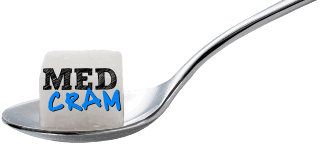In this video from MedCram, Dr. Seheult discusses microplastics and how they are found in our food and get into our bodies. He reviews some recent articles that have come out discussing how microwaving even plastics that are considered to be safe can release billions of microplastic particles.
Is microwaving plastics safe?
The article is referring to a study released in June 2023. What the study did was take polypropylene containers which are a hard plastic that can be used to microwave food items, and polyethylene reusable food pouches and put them under different scenarios using deionized water and 3% acetic acid as food simulants for aqueous foods and acidic foods. What they found was that microwave heating caused the highest release of microplastics and nanoplastics into food compared to refrigeration or room-temperature storage. Per the article, some of the containers could release as many as 4.22 million microplastic and 2.11 billion nanoplastic particles from only one square centimeter of plastic area within 3 minutes of microwave heating.
Can microplastics affect cells?
The study then went in vitro and found that 77% of kidney cells that were exposed to the highest level of plastic at 48-72 hours were killed off. This is not to say that our own kidneys would be exposed to such high concentrations directly, but it does suggest that there is some potential toxicity of these microplastics and nanoplastics.
How much microplastics do we consume?
Another article from 2019 looked at over 402 data points from 26 studies and found that they estimated the annual microplastics consumption ranged from 39000 to 52000 particles depending on age and sex. When inhalation was considered, the estimates increased to 74000 and 121000. They also found that persons who get their water intake only through bottled sources may be infesting an additional 90000 microplastics annually compared to 4000 microplastics for those who consume tap water only.
Where else can you get exposure to microplastics?
Where else can you be exposed to microplastics? Another study looked at cutting boards as an overlooked source of microplastics in human food. They found that chopping on polyethylene boards was associated with a greater release of microplastics with a vegetable than chopping without a vegetable. They estimated that there is a per-person annual exposure of 7.4-50.7 grams of microplastics from a polyethylene chopping board and 49.5 grams of microplastics from a polypropylene chopping board.
Can microplastics actually end up in human tissue?
So with all of these potential exposures it does give Dr. Seheult pauses to try and reflect where he can cut down on his own potential exposures. However, as a skeptic one can assume that even though you are consuming a certain amount of these micro and nanoparticles that a lot will come out as waste. The question is are we actually seeing evidence of microplastics getting into our bodies and lodging in our tissues. In this article, they looked to see whether microplastics could be found in the human heart and its surrounding tissues. They found that although microplastics were not universally present in all the tissue samples, they were nonetheless detected.
This is not meant to cause alarm; however, we should evaluate areas where we can make changes to minimize our exposure to microplastics.
LINKS / REFERENCES:
Microwaving ‘Safe’ Plastics Can Release Billions of Particles, Scientists Warn (Science Alert) | https://www.sciencealert.com/microwav…
Assessing the Release of Microplastics and Nanoplastics from Plastic Containers and Reusable Food Pouches: Implications for Human Health (ACS) | https://pubs.acs.org/doi/10.1021/acs….
Human Consumption of Microplastics (ACS) | https://pubs.acs.org/doi/full/10.1021…
Cutting Boards: An Overlooked Source of Microplastics in Human Food? (ACS) | https://pubs.acs.org/doi/full/10.1021…
Detection of Various Microplastics in Patients Undergoing Cardiac Surgery (ACS) | https://pubs.acs.org/doi/10.1021/acs….
BPA Free Plastic: Why It Does NOT Protect You | Harvard Professor Joseph Allen (MedCram) | • BPA Free Plastic: Why It Does NOT Pro…
